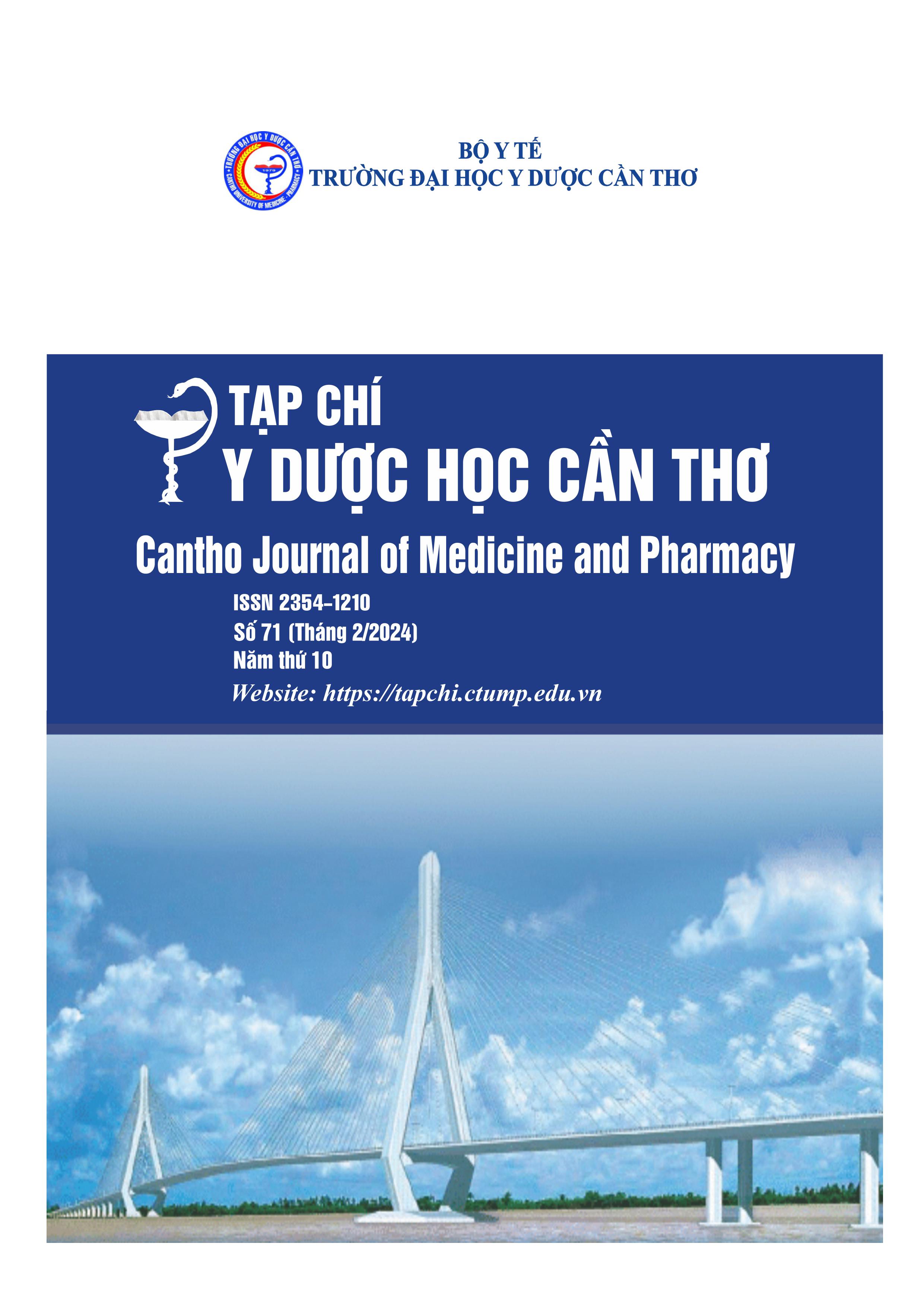CLASSIFICATION AND SOME RELATED FACTORS IN TREATMENT RESULTS OF ATROPHIC SCAR BY SUBCISION, FRACTIONAL CO2 LASER AND HOSA SERUM AT CAN THO UNIVERSITY OF MEDICINE AND PHARMACY HOSPITAL AND FOB VOCATIONAL EDUCATION CENTER OF BEAUTY
Main Article Content
Abstract
Background: Acne scarring have been subclassified into ice pick, rolling scars and boxcar, are common undesirable complication. The results of treating atrophic scars are sometimes related to a number of factors such as age, duration of atrophic scar… Objectives: Classification and some related factors in treatment results of atrophic scar by subcision, fractional CO2 laser and Hosa serum at Can Tho university of medicine and pharmacy hospital and FOB vocational education center of beauty in 2022-2023. Materials and methods: A cross-sectional study was conducted with 73 atropic scar patients. Results: The average age of onset of atrophic scars is 19.94.1 years, the average duration of scarring is 9.27.4 years. The most common type of atrophic scar is boxcar scar (94.5%) and the condition of having 2 to 3 types of scars is 38.4%. 100% improved the number of atrophic scars, 94.5% improved the flatness of atrophic scars, 97.3% improved the color of atropic scars, the overall treatment result reached 91.8%. Achieving treatment results in the group of patients with mild flatness up to 95.8%. The group with a number of >20 lesions had an unsatisfactory result of 9.1%, higher than the group with a number of 1-10 lesions (8.6%). The age of patients (20.43.9) had higher results than patients without results (153.7). Patients with successful treatment results had a shorter duration of atrophic scar (8.77.2) than patients without results (15.77.3). Conclusion: Most patients have 2 to 3 types of scars. Patients treated for atropic scars early achieve better treatment results than patients treated late.
Article Details
Keywords
Acne scar, age, duration of atrophic scar
References
2. Micali Giuseppe, Lacarrubba Francesco, Tedeschi Aurora. Classification of Acne Scars: Clinical and Instrumental Evaluation. Acne scars classification and treatment. 2019. 2, 1-8. doi: https://doi.org/10.1201/9781315179889.
3. Nguyễn Văn Thường. Chăm sóc thương tổn da vùng mặt, Điều dưỡng trong chuyên ngành Da liễu. 2019. 100-104.
4. Xu Y., Deng Y. Ablative Fractional CO2 Laser for Facial Atrophic Acne Scars. Facial Plast Surg. 2018. 34, 205-219, doi: https://doi.org/ 10.1055/s-0037-1606096.
5. Micali Giuseppe, Lacarrubba Francesco, Tedeschi Aurora. Classification of Acne Scars: Clinical and Instrumental Evaluation. Acne scars classification and treatment. 2019. (2), 1-8.
6. Haggaga M. M. et al. Fractional CO2 laser versus fractional CO2 laser with subcision in management of atrophic postacne scar. Menoufia Med J. 2021. 34, 34-39. doi: 10.4103/mmj.mmj_160_19.
7. Huỳnh Văn Sang. Nghiên cứu đặc điểm lâm sàng và kết quả điều trị sẹo rỗ bằng laser CO2 fractional tại Bệnh viện Trường Đại Học Y Dược Cần Thơ. Luận văn Chuyên khoa cấp II. Trường đại học Y Dược Cần Thơ. 2019.
8. Nguyễn Diệu Thuần, Nguyễn Hữu Sáu. Khảo sát một số đặc điểm lâm sàng và yếu tố liên quan của sẹo lõm trứng cá ở bệnh nhân đến khám tại bệnh viện Da liễu Trung ương. Da liễu học. 2018. (27), 47-54.
9. Saeed A. H. M., Alsaiari S. A. The efficacy of fractional CO2 laser resurfacing in the treatment of facial acne scars. Salaiman Ayed Alsaiari Department of Internal Medicine. Najran University. 2018, doi: 10.5455/ijmsph.2018.0412829042018.


